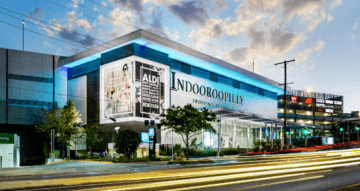“For things to remain the same everything must change” – di Lampedusa
Whilst present pace of change appears unstoppable with the emergence of the worldwide pandemic it is difficult to forecast how we will adapt in the long term, however one thing is for certain, all things have and will continue to change.
The retail and commercial market is no exception. As property development advisors for owner-occupiers and developers, we need to account for both the long term and the short term commercial success of our projects.
The likely change in commercial office trends seems more easily identified. The immediate requirement of work from home demanded rapid adaption to broadly unfamiliar working methods. Like many of our clients, we found that service delivery did not falter and in fact in some areas, like administration, became more efficient.
Anecdotal feedback from our clients suggests that working remotely has led to higher employee morale through work-life balance, completing work tasks remotely has allowed time for other activities, such as exercise. Moving forward, flexible work from home arrangements are likely to be adopted by many businesses. This may lead to increased office vacancy rates or a diversified rather than centralised distribution of office accommodation.

On the retail front, shoppers’ expectations for convenient ‘click and collect’ retailing is becoming more entrenched. National retailers anticipate reinventing their existing point of sale and distribution network to account for the phenomenal demand for this service.
Supermarket chains for example are increasing their provision for drive thru, drive up and click and collect in most stores. New warehousing and fulfilment centres to supply the growing adoption of pre-ordering are being planned. Retailers understand that customers will not return to pre-COVID-19 shopping behaviour.
This strategy needs to be adopted by most retailers or they will succumb to the international online juggernauts. Retail centres and their management will need to adapt for online purchasing preferences.
A centre is likely to change from a fragmented set of singular retailers but may need to be managed by the centre owner, to share facilities as part of a centre-wide strategy to provide the same level of convenience to their customers as the larger retailers.

Similarly for the LFR operators, de-centralised well located ‘last mile’ logistical warehousing demand is subsequently increasing. The closer these facilities are provided to bricks and mortar locations the better. Expect lower rents for warehouse space but increased capital value through stronger applied capitalisation rates. Read previous article.
DMA Partners is currently working with owners and retailers on a number of similar models, where large format and convenience retailing is co-located with significant warehousing and logistics capability. As most projects take years to come to fruition, through the approvals, leasing and construction process, we are planning centres with the flexibility to adapt and provide both the traditional ‘experience and buy’ retailing and the ‘click and collect’ or ‘delivery’ model.
Retail and logistics have been merging for years enhancing supply chain capabilities and customer experience, as evidenced by the big name online retailers like Amazon. The retail experience is evolving faster than ever and we are moving with the times.




